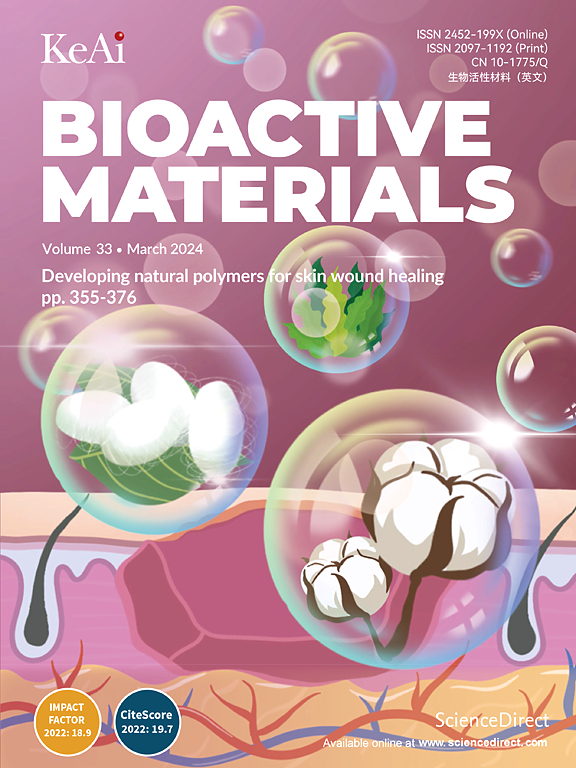Integrating melt electrospinning writing and microfluidics to engineer a human cardiac microenvironment for high-fidelity drug screening
IF 18
1区 医学
Q1 ENGINEERING, BIOMEDICAL
引用次数: 0
Abstract
The preclinical evaluation of drug-induced cardiotoxicity is critical for developing novel drug, helping to avoid drug wastage and post-marketing withdrawal. Although human induced pluripotent stem cell-derived cardiomyocytes (iPSC-CMs) and the engineered heart organoid have been used for drug screening and mimicking disease models, they are always limited by the immaturity and lack of functionality of the cardiomyocytes. In this study, we constructed a Cardiomyocytes-on-a-Chip (CoC) that combines micro-grooves (MGs) and circulating mechanical stimulation to recapitulate the well-organized structure and stable beating of myocardial tissue. The phenotypic changes and maturation of CMs cultured on the CoC have been verified and can be used for the evaluation of cardiotoxicity and cardioprotective drug responses. Taken together, these results highlight the ability of our myocardial microarray platform to accurately reflect clinical behaviour, underscoring its potential as a powerful pre-clinical tool for assessing drug response and toxicity.

整合熔体静电纺丝书写和微流体技术,设计用于高保真药物筛选的人类心脏微环境。
药物性心脏毒性的临床前评价对新药开发至关重要,有助于避免药物浪费和上市后退出。虽然人类诱导多能干细胞衍生的心肌细胞(iPSC-CMs)和工程心脏类器官已被用于药物筛选和模拟疾病模型,但它们总是受到心肌细胞不成熟和缺乏功能的限制。在这项研究中,我们构建了一个心肌细胞芯片(CoC),它结合了微槽(mg)和循环机械刺激来重现心肌组织的有序结构和稳定跳动。在CoC上培养的CMs的表型变化和成熟已经得到验证,可用于评估心脏毒性和心脏保护药物反应。综上所述,这些结果突出了心肌微阵列平台准确反映临床行为的能力,强调了其作为评估药物反应和毒性的强大临床前工具的潜力。
本文章由计算机程序翻译,如有差异,请以英文原文为准。
求助全文
约1分钟内获得全文
求助全文
来源期刊

Bioactive Materials
Biochemistry, Genetics and Molecular Biology-Biotechnology
CiteScore
28.00
自引率
6.30%
发文量
436
审稿时长
20 days
期刊介绍:
Bioactive Materials is a peer-reviewed research publication that focuses on advancements in bioactive materials. The journal accepts research papers, reviews, and rapid communications in the field of next-generation biomaterials that interact with cells, tissues, and organs in various living organisms.
The primary goal of Bioactive Materials is to promote the science and engineering of biomaterials that exhibit adaptiveness to the biological environment. These materials are specifically designed to stimulate or direct appropriate cell and tissue responses or regulate interactions with microorganisms.
The journal covers a wide range of bioactive materials, including those that are engineered or designed in terms of their physical form (e.g. particulate, fiber), topology (e.g. porosity, surface roughness), or dimensions (ranging from macro to nano-scales). Contributions are sought from the following categories of bioactive materials:
Bioactive metals and alloys
Bioactive inorganics: ceramics, glasses, and carbon-based materials
Bioactive polymers and gels
Bioactive materials derived from natural sources
Bioactive composites
These materials find applications in human and veterinary medicine, such as implants, tissue engineering scaffolds, cell/drug/gene carriers, as well as imaging and sensing devices.
 求助内容:
求助内容: 应助结果提醒方式:
应助结果提醒方式:


